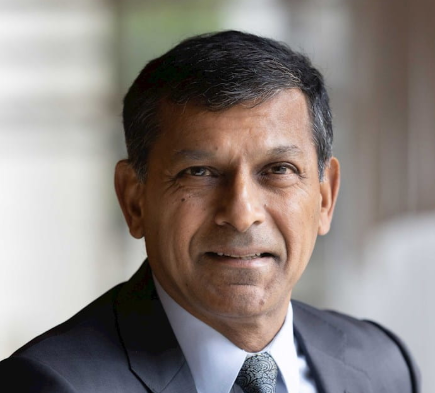
India’s economy, widely considered the fastest-growing among major global economies, might now be facing unexpected headwinds. The Asian Development Bank (ADB) has recently revised India's GDP growth forecast downward — reducing it from 6.7 percent to 6.5 percent for the current financial year. While a 0.2 percent cut may appear minor, it carries strong implications about the challenges facing India's economy, particularly in terms of private investment and global trade risks.
Former Reserve Bank of India (RBI) Governor Raghuram Rajan has weighed in with a timely warning, emphasizing that simply reducing the repo rate will not be enough to drive fresh private investment in the country.
According to media reports, Rajan stated that it is unreasonable to expect a major boost in investment purely from rate cuts. He pointed out that interest rates are not as high now as they were in previous years, and yet industries continue to remain cautious. This, he argues, shows that other structural issues are holding back business confidence and investment appetite.
Rajan believes that the key to reviving private sector investment lies in broader reforms beyond monetary policy. He said that greater transparency in business regulations and increased competition across sectors would go a long way in encouraging companies to invest. When businesses trust the system and feel confident in market stability, they are more likely to deploy capital in new projects.
Before the 2008 global financial crisis, India saw strong private investment activity. However, post-crisis, Indian companies have become significantly more cautious. Rajan also highlighted a shift in consumer behavior: earlier, it was believed that rural or lower-middle-class segments were not spending enough, but now even the upper-middle class is showing restraint in consumption. This subdued demand is further discouraging companies from expanding their production or launching new ventures.
Official data backs his concerns. The Ministry of Statistics reports that private sector investment is currently at an 11-year low. That means companies are not spending on building new factories, installing machinery, or initiating fresh infrastructure projects.
Rajan insists that lowering interest rates alone will not solve this problem. He stressed that policy makers must focus on simplifying regulations, building trust in institutions, and promoting healthy competition to trigger a wave of private investment. Without these reforms, companies will continue to hold back despite favorable interest rates.
On the issue of inflation, Rajan noted that the current situation is relatively stable. However, he cautioned that the Reserve Bank of India must also pay close attention to core inflation — which excludes food and fuel prices. He observed that core inflation is slightly higher than the overall inflation rate, although still under control.
He also addressed the global trade environment, particularly the risk of rising tariffs. According to Rajan, if import duties go up globally — as seen in countries like the United States — it could negatively impact export-driven economies like India. Such tariff wars might not only disrupt trade flows but also affect India’s manufacturing and employment sectors.
In conclusion, Raghuram Rajan has made it clear that cutting the repo rate alone will not revive India's private investment cycle. Instead, structural reforms, transparency in governance, and increased competition are essential to restoring business confidence. The RBI, while keeping inflation in check, must also remain alert to global economic trends that could influence India's growth path.
The larger question now is whether policymakers will heed Rajan’s warning and introduce deeper reforms — or continue to rely on monetary policy as the primary tool to boost economic activity.
Disclaimer:
This article is based on recent public statements and economic forecasts. It is intended for informational purposes only and does not constitute financial advice. Please consult a professional before making investment decisions.




